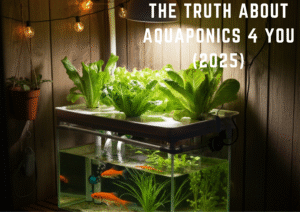
"Lisianthus Seed Magic: Simple Steps to a Stunning Flower Garden"
 Have you ever been captivated by the delicate beauty of Lisianthus flowers? Often called the “Japanese rose” for their resemblance to their namesake, these elegant blooms boast a silky texture and come in a range of captivating colours, such as lavender, pink, white, and even bi-coloured varieties. But what if we told you that you can cultivate this floral magic right in your garden, and all it takes is a sprinkle of seeds?
Have you ever been captivated by the delicate beauty of Lisianthus flowers? Often called the “Japanese rose” for their resemblance to their namesake, these elegant blooms boast a silky texture and come in a range of captivating colours, such as lavender, pink, white, and even bi-coloured varieties. But what if we told you that you can cultivate this floral magic right in your garden, and all it takes is a sprinkle of seeds?
Yes, believe it or not, growing. Lisianthus from seeds is not just possible; it’s surprisingly achievable! This guide will unveil the secrets to unlocking Lisianthus seed magic, transforming your garden into a haven of delicate beauty.
Unveiling the Lisianthus Seed: A Delicate Beginning
Lisianthus (Eustoma) is a cool-season annual, meaning it thrives in cooler temperatures and completes its lifecycle within a single year. The seeds themselves are tiny wonders resembling black specks. Though small, they hold the potential for breathtaking blooms.
Before we delve into the world of seed sowing, let’s gather the essentials:
Lisianthus seeds: Choose high-quality seeds from a reputable source. Look for varieties that suit your climate and desired bloom colour.
Seed starting tray or pots: Shallow trays with drainage holes are ideal.Seed starting mix: Opt for a sterile, well-draining mix specifically formulated for seedlings.
Watering the can with a fine spray nozzle.
Clear plastic wrap or humidity dome (optional): This helps retain moisture during germination.
Grow lights (optional): Seedlings need adequate light. If natural light is limited, invest in grow lights.
Sowing the Seeds of Success: A Step-by-Step Guide
Now, Let’s embark on the magical journey of bringing your Lisianthus seeds to life:
- Prepping the Seed Starting Mix: Fill your seed starting tray or pots with the seed starting mix. Gently tamp the surface to create a level planting area.
- Sowing the Seeds: Here’s the key to Lisianthus seed magic: Don’t bury the seeds! Sprinkle them evenly on the surface of the moistened mix. You can barely press them down with your fingertip to ensure good contact.
- Maintaining the Perfect Environment: Moisten the seed starting mix using a fine spray nozzle. Avoid drenching the soil. Cover the tray or pots with clear plastic wrap or a humidity dome to retain moisture.
- Light and Location: Place your seedlings in a warm location (around 70°F) with bright, indirect sunlight.You can use grow lights for at least 14-16 hours a day if natural light is limited.
- Seed Germination Magic:Germination typically takes 10-14 days. Be patient and maintain consistent moisture in the soil by misting regularly. Don’t overwater, as this can lead to damping off (fungal disease).
- Witnessing the Wonder of Sprouts: Onceseedlings emerge, gradually remove the plastic wrap or humidity dome to allow for proper air circulation.
- Thinning the Seedlings: Once your Lisianthus seedlings have developed a few true leaves; it’s time for thinning. This ensures optimal growth and prevents overcrowding. Gently pinch off the weaker seedlings, leaving the strongest ones spaced 2-3 inches apart.
- Preparing for the Big Move: When your Lisianthus seedlings have at least 4-6 true leaves and have reached a height of 2-3 inches, they’re ready to be transplanted into their permanent home in your garden.
Planting Lisianthus Seedlings and Beyond: Care for Lasting Beauty
Choosing the Right Location: Select a location in your garden that receives at least 6-8 hours of direct sunlight daily. Ensure the soil is well-drained and amended with organic matter for optimal growth.
Transplanting: Carefully dig holes slightly larger than the root ball of your seedlings. Gently transplant them, ensuring the crown (where the stem meets the roots) sits slightly above the soil surface. Water thoroughly after transplant.
Watering and Fertilization:Lisianthus thrives with consistent moisture. Water deeply when the top inch of soil feels dry to the touch. Avoid overwatering, which can lead to root rot. Fertilize your Lisianthus plants every few weeks during the growing season, using a balanced fertilizer diluted to half strength.
Deadheading for Continuous Blooms: Deadheading,or removing spent flowers encourages your Lisianthus plants to produce more blooms throughout the season. Pinch off the faded flowers just below the seed pod.
Enjoying the Rewards of Your Labor: Within 8-10 weeks of transplanting,your Lisianthus seedlings will begin to reward you with their breathtaking blooms. The delicate, papery flowers can last for up to two weeks on the plant, and with proper care, you can enjoy these floral wonders throughout the summer and early fall.
A Few Extra Tips for Success:
Pinching: Once your Lisianthus reaches about 6 inches tall, pinch off the top growth point. This encourages bushier growth with more blooms.
Mulching: Apply a layer of organic mulch around the base of your plants to retain moisture, suppress weeds, and regulate soil temperature.
Pest Control: Keep an eye out for common garden pests like aphids or whiteflies. Use organic pest control methods like neem oil spray or insecticidal soap if necessary.
Succession Planting: For extended blooms, consider planting Lisianthus seeds indoors every few weeks throughout the spring. This way, you’ll have a continuous supply of seedlings ready for transplanting as the season progresses.
FAQs
Here are some commonly asked questions about growing Lisianthus from seed:
Q: When is the best time to sow Lisianthus seeds?
A:The ideal time to sow Lisianthus seeds depends on your climate. In colder regions, start seeds indoors 6-8 weeks before the last frost date. In warmer climates, you can sow seeds directly outdoors in early spring once the danger
of frost has passed.
Q: Can I save seeds from my Lisianthus plants?
A:Yes, you can! Once the seed pods dry and turn brown, carefully collect the seeds and store them in a cool, dark place for future planting. However, keep in mind that some F1 hybrid varieties may not produce true-to-type seeds.
Q: My Lisianthus seedlings are leggy. What went wrong?
A:Leggy seedlings are typically caused by insufficient light. Ensure your seedlings receive at least 14-16 hours of bright, indirect sunlight daily.
Q: My Lisianthus plants aren’t flowering. What could be the reason?
A:Several factors can contribute to a lack of blooms. Ensure your plants are receiving adequate sunlight, not being overwatered, and are being fertilized regularly during the growing season.
With a little patience and these simple steps, you can unlock the magic of Lisianthus seeds and cultivate a stunning flower garden. From sowing the tiny treasures to witnessing the captivating blooms, growing these delicate beauties can be a truly rewarding experience. So, grab your seeds, get ready to witness the miracle of life unfold, and transform your garden into a haven of floral elegance!
Table of Contents
SEARCH HERE
CATEGORIES
RECENT POSTS



Advanced Mitochondrial Formula 2025: Can It Truly Recharge Your Energy Levels?

The Truth About Aquaponics 4 You (2025): Does It Actually Work?




Hepato Burn Supplement Review: What You Need to Know Before Buying



“The Ultimate Guide to Papillex: Natural Immune Support for HPV Relief”



Slim Down Naturally: The Truth About Plant-Based Fat Burner That Actually Work

TedsWoodworking Review 2025: Is It Worth It for Your DIY Projects?




“Immunotherapy vs. Chemotherapy: A New Era in Cancer Treatment”





“The Ultimate Guide to Hyperpigmentation Laser Treatment in 2025”


Is UV 7 Good for Tanning? What You Need to Know Before You Glow


Planning a Trip from New Windsor to Grand Canyon? Here’s What to Know

